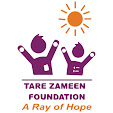SELF HELP GROUPS
A Self-Help Group is an informal group in which a group of people comes together to form a committee/organization/association. The members of the group entrust one person to collect money, and this amount is used to help out the person who is in need. Generally, this person who requires help is a part of the committee as well.
As the name suggests, Self-Help Groups are self-governed, and the members belong to a similar socio-economic background, typically one which is not very affluent. They are brought together by a common desire to work for the upliftment of their community and to make the organization financially secure collectively.
SELF HELP GROUPS IN INDIA
Self-Help Groups are usually found in India, though variations can be seen across the world. Seen more often in villages than in cities, Self-Help Groups go a long way in ensuring that the community is self-sufficient.
Self-Help Groups come into effect in situations in which the town or locality is suffering from social issues like poverty, illiteracy, lack of awareness, unskilled labour, and lack of institutions agreeing to issue credit/loans.
The two most significant projects that have been linked to SHGs are:
1) NABARD- Launched in 1992, NABARD soon became the largest micro-finance project in the world. It allowed SHGs to open savings accounts in banks, giving a significant boost to the organizational working of the SHG.
2) National Rural Livelihood Mission (NRLM) – The NRLM allowed access to mediums of financial help to the poor and the underprivileged, such as bank accounts, savings, credit and loans, insurance, pension, and other financial services. It is one of the most extensive poverty alleviation programmes in the world.
The first Self-Help Group in India has been assumed to be the Self-Employed Women’s Association (SEWA) formed in 1970.
THE NECESSITY OF SHGs
The state and society have long understood the need for SHGs in the community. Not only are they instrumental in poverty alleviation, but they also are critical focal points of awareness. The need for SHGs can be pointed out as follows:
1) Poverty Alleviation- SHGs are the flag-bearers of poverty alleviation in rural areas. They help the rural community by providing credit and loans whenever one requires assistance. Making it easier for the impoverished to access credit, they become deliverers of class justice in the rural economy.
2) Awareness- SHGs are also crucial for financial literacy. They educate the population depending on them about critical financial services and make them aware of the policies that the government provides.
3) Empowerment- SHGs help women and the underprivileged to grow social capital, thereby empowering them and providing them agency so that could emancipate their respective communities. A vast number of SHGs are female-oriented, with only women as their members.
4) Self-sufficiency- The most visible hurdle that people face in gaining credit is their inability to provide collateral as security, a lack of ground-level reach of institutions, and an unstable community network. SHGs aim to remedy all of these situations and, thus, provide financial stability.
Self-Help Groups are essential to the running of communities, especially those that do not have ready access to financial assistance and resources. Apart from being a financial community themselves, they offer a medium for the masses to connect with other financial aids and services.





0 Comments